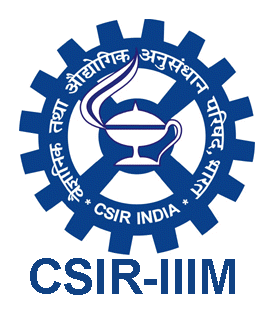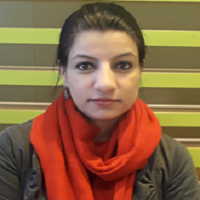
Dr. Nasheeman Ashraf
Principal Scientist
Plant Biotechnology Division
CSIR – Indian Institute of Integrative Medicine, Sanat Nagar Srinagar-190005
Email: nashraf[at]iiim[dot]res[dot]in
Bio Sketch
Plants are master chemists and produce a large repertoire of secondary metabolites.These small molecules perform plethora of functions, for example, they act as hormones, defense compounds, pharmaceuticals, insecticides, dyes, flavors, and fragrances. Inspite of their tremendous importance for humans and for the plant itself, plant secondary metabolism remains poorly characterized. Our focus is elucidation of biosynthetic and regulatory pathways of plant secondary metabolism. We use combinatorial OMICS approach for comprehensive investigations and large-scale gene discovery programs in plant secondary metabolism. This data is also used for discovery of novel regulators of these pathways. Together, this knowledge can be used for engineering of these pathways towards increased yields.
Currently our lab is working on Crocus sativus which is a triploid, sterile geophyte and has been cultivated and used as spice and medicinal plant since thousands of years. The desiccated stigma of C. sativus forms saffron and is source of various carotenoids and unique compounds called apocarotenoids which are produced by oxidative tailoring of carotenoids. In fact Crocus is the only plant which produces apocarotenoids like crocin, picrocrocin and safranal in significant amounts.These compounds provide color, flavour and aroma to this crop making it world’s costliest spice. In addition, these compounds have a broad spectrum of pharmacological properties as well. In order to understand apocarotenoid biosynthetic pathway and its regulation, we have developed transcriptome map for Crocus. This transcriptome data was used for identification of genes involved in apocarotenoid biosynthesis and also transcription factors which regulate this process. We characterized many genes involved in Crocus apocarotenoid biosynthetic pathway. We also identified some novel regulators of this pathway.
Our main focus is:
- Characterization of pathway genes and their engineering to enhance quality of saffron
- Generation of crom rot resistant Crocus
- Identification of genes which regulate apocarotenoid pathway and elucidation of their mechanism of action
Education
| Degree | Subjects | University | Qualifying Year |
| Ph.D | Life Sciences | NIPGR (JNU) | 2010 |
| M.Sc | Biochemistry | G.B.Pant University of Agriculture and Technology | 2003 |
| B.Sc | Agriculture | SKUAST-K | 2001 |
Position Held
| Position Held | Period | Organization |
| Principal Scientist | 2020-Present | CSIR-IIIM |
| Senior Scientist | 2015-2020 | CSIR-IIIM |
| Scientist | 2012-2015 | CSIR-IIIM |
| Scientist Fellow | 2010-2012 | CSIR-IIIM |
Area of Expertise
- Plant metabolomics
- Plant genomics and transcriptomics
- Plant Molecular biology
- Plant stress biology
Projects
- Characterization of apocarotenoid biosynthetic pathway and its regulation
- Investigating role of Myb genes in regulating apocarotenoid pathway
- Investigating role of bHLH gene family in regulating apocarotenoid metabolism
- Micropropagation of Crocus
Publications
|
Khadim Hussain, Zahid Yaqoob Bhat, Arvind Kumar Yadav, Deepika Singh, Nasheeman Ashraf. CstPIF4 Integrates Temperature and Circadian Signals and Interacts with CstMYB16 to Repress Anthocyanins in Crocus. Plant and Cell Physiology, 2023; pcad108, https://doi.org/10.
Javid Ahmad Mir, Arvind Kumar Yadav, Deepika Singh, Umar Gani, Prashant Misra, Nasheeman Ashraf. Natural variations in Crocus sativus lycopene epsilon cyclase (CstLcyE) alter carotenoid/apocarotenoid content and stress tolerance. Environmental and Experimental Botany, 2023, 214,105457, https://doi.org/
Baba SA and Ashraf N. Functional characterization of flavonoid 3′-hydroxylase, CsF3′H, from Crocus sativus L: Insights into substrate specificity and role in abiotic stress. Archives of Biochemistry and Biophysics (2019), 667: 70–78
Ashraf N, Basu S, Narula K, Ghosh S, Tayal R, Gangisetty N, Biswas S, Aggarwal RP, Chakraborty N& Chakraborty S. Integrative network analyses of wilt transcriptome in chickpea reveal genotype dependent regulatory hubs in immunity and susceptibility. Scientific Reports (2018), 8 (1): 6528
Mohiuddin T, Baba SA, Ashraf N. Identification, phylogenetic analysis and expression profiling of ABC transporter family of Crocus sativus L: A step towards understanding apocarotenoid transport. Plant Gene (2018) 14:1-6 Wani ZA, Kumar A, Sultan P, Bindu K, Riyaz-Ul-Hassan S & Ashraf N. Mortierella alpina CS10E4, an oleaginous fungal endophyte of Crocus sativus L. enhances apocarotenoid biosynthesis and stress tolerance in the host plant. Scientific Reports (2017), 7: 8598 Baba SA, Vishwakarma RA, Ashraf N. Functional characterization of CsBGlu12, a β-glucosidase from Crocus sativus provides insights into its role in abiotic stress through accumulation of antioxidant flavonols. Journal of biological chemistry (2017), 292 (11): 4700 -4713 Malik AH, Ashraf N. Transcriptome wide identification, phylogenetic analysis and expression profiling of zinc-finger transcription factors from Crocus sativus L. Mol Genet Genomics (2017), 292 (3): 619-633 Baba SA, Jain D, Abbas N, Ashraf N. Overexpression of Crocus carotenoid cleavage dioxygenase, CsCCD4b, in Arabidopsis imparts tolerance to dehydration, salt and oxidative stresses by modulating ROS machinery. Journal of plant physiology (2015), 189: 114-125 Baba SA, Mohiuddin T, Basu S, Swarnkar MK, Malik AH, Wani ZA, Abbas N, Singh AK, Ashraf N. Comprehensive transcriptome analysis of Crocus sativus for discovery and expression of genes involved in apocarotenoid biosynthesis. BMC Genomics (2015), 16:698. Ashraf N, Jain D, Vishwakarma RA, Identification, cloning and characterization of an ultrapetal transcription factor CsULT1 from Crocus: a novel regulator of apocarotenoid biosynthesis. BMC Plant Biology (2015), 15: 25. Wani ZA, Ashraf N, Mohiuddin T, Riyaz-Ul-Hassan S. Plant-endophyte symbiosis, an ecological perspective. Appl Microbiol Biotechnol (2015), 99 (7): 2955-65 Peer reviewed publications: Bhat ZY, Mohiuddin T, Kumar A, López-Jiménez AJ, Ashraf N Crocus transcription factors CstMYB1 and CstMYB1R2 modulate apocarotenoid metabolism by regulating carotenogenic genes. Plant Mol Biol (2021), 107: 49-62 Baba SA and Ashraf N. Functional characterization of flavonoid 3′-hydroxylase, CsF3′H, from Crocus sativus L: Insights into substrate specificity and role in abiotic stress. Archives of Biochemistry and Biophysics (2019), 667: 70–78 Ashraf N, Basu S, Narula K, Ghosh S, Tayal R, Gangisetty N, Biswas S, Aggarwal RP, Chakraborty N& Chakraborty S. Integrative network analyses of wilt transcriptome in chickpea reveal genotype dependent regulatory hubs in immunity and susceptibility. Scientific Reports (2018), 8 (1): 6528 Mohiuddin T, Baba SA, Ashraf N. Identification, phylogenetic analysis and expression profiling of ABC transporter family of Crocus sativus L: A step towards understanding apocarotenoid transport. Plant Gene (2018) 14:1-6 Wani ZA, Kumar A, Sultan P, Bindu K, Riyaz-Ul-Hassan S & Ashraf N. Mortierella alpina CS10E4, an oleaginous fungal endophyte of Crocus sativus L. enhances apocarotenoid biosynthesis and stress tolerance in the host plant. Scientific Reports (2017), 7: 8598 Baba SA, Vishwakarma RA, Ashraf N. Functional characterization of CsBGlu12, a βglucosidase from Crocus sativus provides insights into its role in abiotic stress through accumulation of antioxidant flavonols. Journal of biological chemistry (2017), 292 (11): 4700 -4713 Malik AH, Ashraf N Transcriptome wide identification, phylogenetic analysis, and expression profiling of zinc-finger transcription factors from Crocus sativus L. Mol Genet Genomics (2017), 292 (3): 619-633 Baba SA, Jain D, Abbas N, Ashraf N. Overexpression of Crocus carotenoid cleavage dioxygenase, CsCCD4b, in Arabidopsis imparts tolerance to dehydration, salt and oxidative stresses by modulating ROS machinery. Journal of plant physiology (2015), 189: 114-125 Baba SA, Mohiuddin T, Basu S, Swarnkar MK, Malik AH, Wani ZA, Abbas N, Singh AK, Ashraf N. Comprehensive transcriptome analysis of Crocus sativus for discovery and expression of genes involved in apocarotenoid biosynthesis. BMC Genomics (2015), 16:698. Ashraf N, Jain D, Vishwakarma RA, Identification, cloning and characterization of an ultrapetal transcription factor CsULT1 from Crocus: a novel regulator of apocarotenoid biosynthesis. BMC Plant Biology (2015), 15: 25. Wani ZA, Ashraf N, Mohiuddin T, Riyaz-Ul-Hassan S. Plant-endophyte symbiosis, an ecological perspective. Appl Microbiol Biotechnol (2015), 99 (7): 2955-65 Bhat WW, Dhar N, Razdan S, Rana S, Mehra R, Nargotra A, Dhar RS, Ashraf N, Vishwakarma R, Lattoo SK. Molecular characterization of UGT94F2 and UGT86C4, two glycosyltransferases from Picrorhiza kurrooa: comparative structural insight and evaluation of substrate recognition. PLoS One (2013), 16; 8 (9): e73804. Ashraf N, Ghai D, Barman P, Basu S, Gangisetty N, Mandal MK, Chakraborty N, Datta A, Chakraborty S. Comparative analyses of genotype dependent expressed sequence tags and stress-responsive transcriptome of chickpea wilt illustrate predicted and unexpected genes and novel regulators of plant immunity. BMC Genomics (2009), 10:415 Patents US patents Chakraborty S, Chakraborty N, Datta A, Ashraf N, Basu S, Nag P and Singh M (2010) Polynucleotides derived from chickpea and uses thereof (US No. 13/393,340). Published by USPTO on 21/06/2012 (Pub. No. US 20120159668 A1). Indian Patents Chakraborty S, Datta A, Chakraborty N, Ashraf N, and Basu S, (2009) Functional genomics and stress responsive polynucloetides from chickpea [IPA-1565/DEL/2009].
|
Awards and Honours
- Awarded EMBO short term fellowship to work as a visiting scientist at Botanical Institute, University of Castilla La Mancha, Albacete, Spain
- Awarded CSIR-Raman research fellowship to work as a visiting scientist in University of Kentucky, USA (2015-16)
- Awarded senior research fellowship by council of scientific and industrial research (CSIR) (2005-2008)
- Awarded junior research fellowship by council of scientific and industrial research (CSIR) (2003-2005)
- Qualified graduate aptitude test for engineering (GATE) in 2003 with 97.19 percentile.
Students
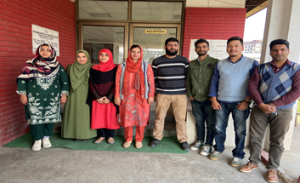
| Photo
|
Name with
(AcSIR Enrolment No./departmental I.D.) |
Thesis Title/Project Title | Academic/Research
Accomplishment |
 |
Dr. Syed Mudassir Jeelani I.D No. 1903
|
Genetic improvement and yield optimization of sexually sterile Crocus sativus L. (Saffron) through in vitro approaches and mutation breeding
|
UGC-DSK SERB-YSS IsDB Postdoctoral Fellowship CSIR-SRA (Pool Scientist)
|
|
|
Dr. Tabasum Mohi Ud Din I.D No. 2277
|
Role of bHLH transcription factors in regulating apocarotenoid biosynthesis in Crocus sativus.
|
CSIR-NET JRF
CSIR-RA
|
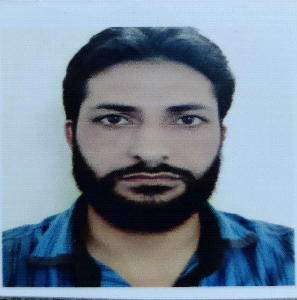 |
Zahid Yaqoob Bhat
Enrol. No.10BB16A37010 I.D No. 1883 |
Cloning and characterization of MYB transcription factors involved in regulation of secondary metabolism in Crocus sativus L. | NET-JRF (UGC) |
 |
Khadim Hussain
Enrol. No.10BB17J37007 I.D. No. 1941
|
Investigating role of MYB genes in regulating secondary metabolism in Crocus sativus L. | NET-JRF (UGC) |
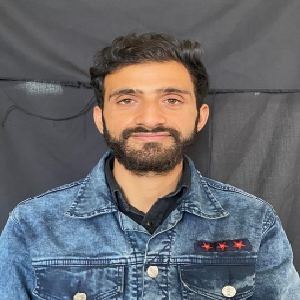 |
Javid Ahmad Mir
Enrol. No.10BB17A37006 I.D No. 2082 |
Cloning, characterization and regulation of Lycopene cyclases from Crocus sativus. L | NET-JRF (UGC) |
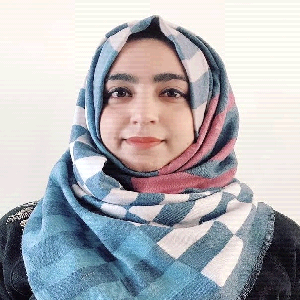 |
Nargis Khurshaid
Enrol. No.10BB18A37005 I.D No. 2198 |
Identification of MADS-Box gene family from Crocus sativus L. and its role in regulating floral development and apocarotenoid biosynthetic pathway
|
DST-INSPIRE JRF |
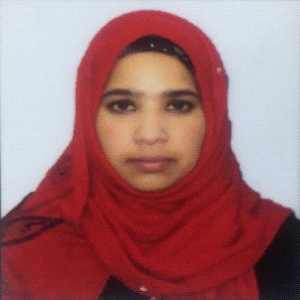 |
Najwa Shabir
Enrol. No.10BB19A37001 I.D No. 2278
|
Identification of carotenoid cleavage dioxygenases (CCDs) from Crocus sativus and unravelling their biological function and regulation.
|
DST-INSPIRE JRF
·
|
 Screen Reader Access
Screen Reader Access